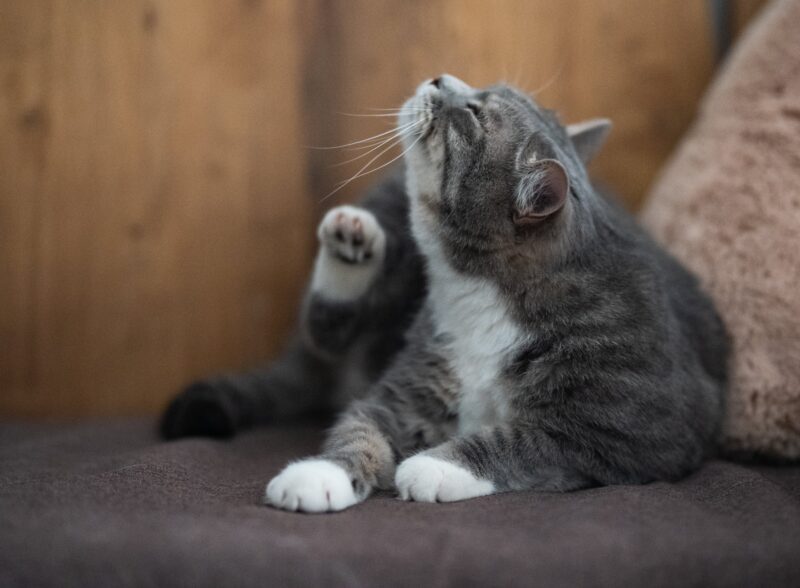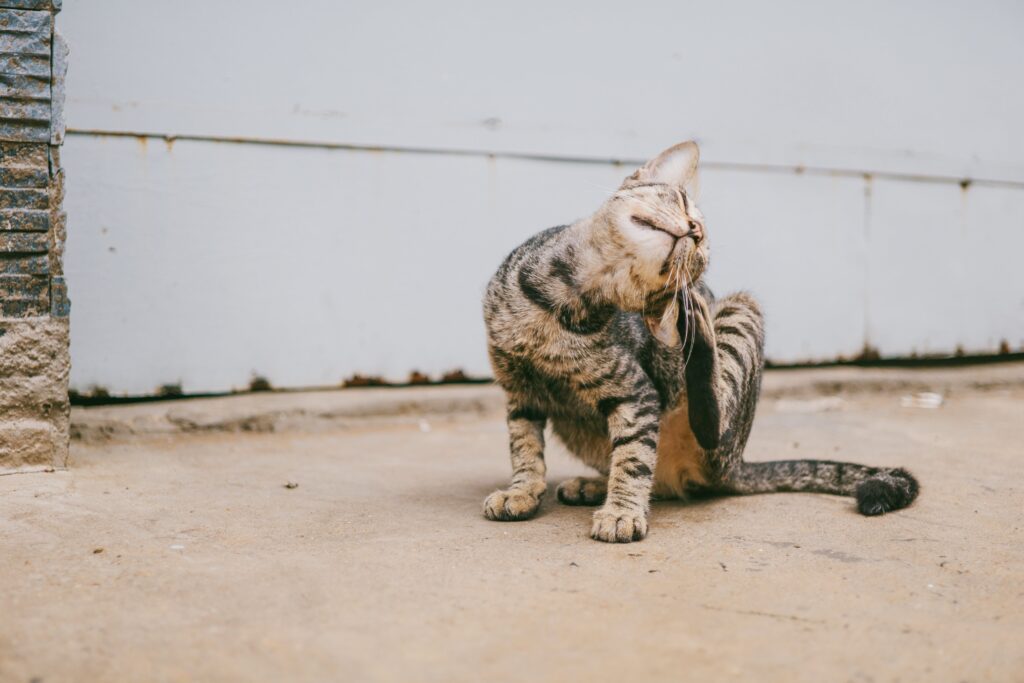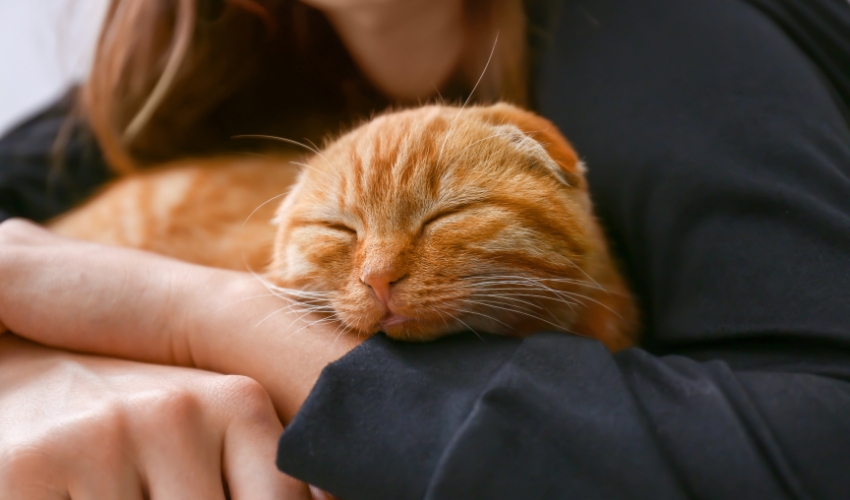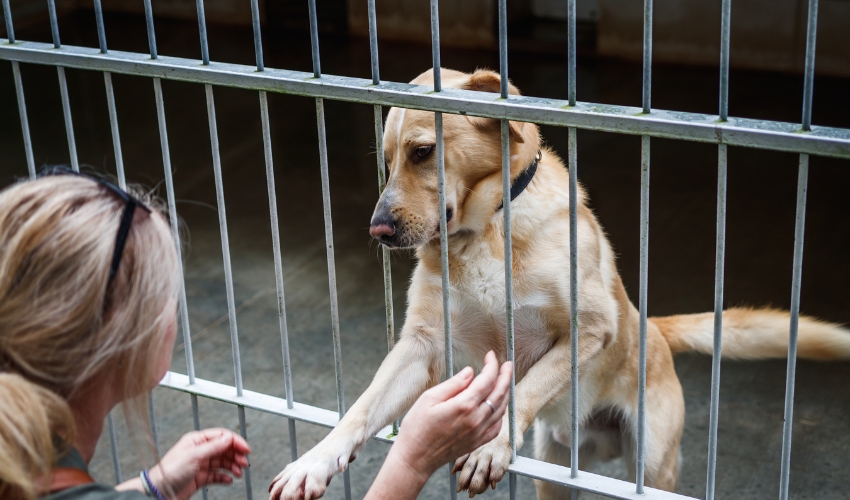While garlic has been suggested as a natural remedy for certain pests in various animals, including cats, it’s important to note that garlic can be toxic to cats and should not be used as a preventive measure for lice or other parasites.
Garlic contains compounds, such as thiosulphate, that may potentially damage your purr baby’s red blood cells. Tabbies are more sensitive to these compounds than some other animals, and even small amounts of garlic can be harmful.
If you suspect that your cat has lice or other external parasites, it’s crucial to consult with a veterinarian for appropriate and safe treatment options. Veterinarians can recommend effective and cat-safe products, such as topical medications or prescription medications, to address parasitic infestations.
Using garlic or any home remedy without veterinary guidance may put your feline friend’s health at risk. That is why it is always better to seek professional advice when it comes to the health and well-being of your feline companion.
What Are The Causes of Lice in Cats?
Lice infestations in cats are relatively uncommon compared to other external parasites like fleas and ticks. However, when they do occur, they are typically caused by specific species of lice that are adapted to infest felines. The two main types of lice that can affect cats are:
Felicola subrostratus (chewing lice): These lice feed on skin debris, hair, and other bodily fluids.
Linognathus setosus (sucking lice): These lice feed on the blood of the cat.

Lice are highly host-specific, meaning that the species found on cats are different from those that infest other animals. And just in case you’re wondering, lice from humans are different from lice found in cats.
Here are some common causes of lice infestations in cats:
Direct Contact: Lice are typically transmitted through direct contact with an infested tabby. This can occur during close interactions, such as grooming, playing, or sleeping together.
Poor Hygiene: Cats that are not groomed regularly or are in conditions of poor hygiene may be more susceptible to lice infestations.
Crowded Living Conditions: Felines in crowded or stressful environments, such as multi-cat households or shelters, may have a higher risk of lice infestations due to increased opportunities for direct contact.
Weakened Immune System: Tabbies with weakened immune systems, whether due to age, illness, or other factors, may be more susceptible to lice infestations.
Stray or Feral Cats: Cats that live outdoors, especially in colonies or areas with high cat populations, may be at a higher risk of lice infestations through direct contact with other infested cats.
How to Treat Lice in our Feline Companions
Lice infestations in cats can be effectively treated with appropriate veterinary-approved products. It’s important to consult with a veterinarian for a proper diagnosis and to determine the most suitable treatment plan for your cat. Here are general guidelines for treating lice in cats:
Consult with a Veterinarian: Schedule an appointment with a veterinarian to confirm the diagnosis of lice and to discuss an appropriate treatment plan.
Prescription Medications: Veterinary-prescribed topical medications are often the primary treatment for lice in cats. These medications are designed to kill both adult lice and their eggs (nits). It is important that you follow your veterinarian’s instructions regarding the application and frequency of the treatment.
Flea Combs: Using a fine-toothed flea comb can help remove adult lice and nits from your purr baby’s fur. Comb through the fur carefully, and dip the comb in soapy water to drown the lice.
Environmental Cleaning: Thoroughly clean and disinfect your tabby’s environment, including bedding, toys, and any areas where the cat spends time. This helps prevent reinfestation.
Isolation and Treatment of Other Cats: If you have multiple feline friends, consider isolating the infested tabby until the infestation is under control. Treat all cats in the household to prevent the spread of lice.
Avoid Over-the-Counter Products without Veterinary Approval: Avoid using over-the-counter lice treatments or home remedies without consulting a veterinarian. Some products may not be safe for cats, and using them without professional guidance can be harmful.
Follow-Up Veterinary Examinations: Schedule follow-up appointments with the veterinarian as recommended. This allows the vet to assess the effectiveness of the treatment and address any additional concerns.
Preventive Measures: Consider using preventive measures, such as regular grooming and maintaining good hygiene, to reduce the risk of lice infestations in the future.
Lice are generally visible to the naked eye, and signs of infestation may include itching, scratching, and visible lice or eggs (nits) on your tabby’s fur. If you suspect that your tabby has lice, it’s important to consult with a veterinarian for proper diagnosis and treatment. Veterinary-approved products, such as topical medications or prescription treatments, are available to effectively eliminate lice infestations in cats. Attempting to treat lice with over-the-counter products without veterinary guidance can be ineffective and may pose risks to your cat’s health.
It’s essential to follow the veterinarian’s advice and treatment plan diligently. If left untreated, lice infestations can cause discomfort and skin irritation for the cat. Additionally, they can lead to complications such as secondary bacterial infections.
Always consult with a veterinarian before using any medications or treatments on your cat, as individual cats may have different health considerations or sensitivities.












